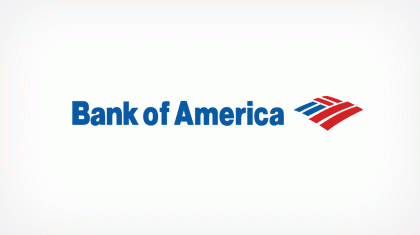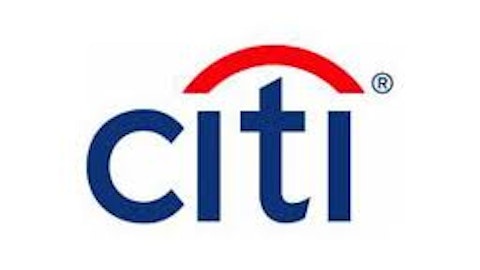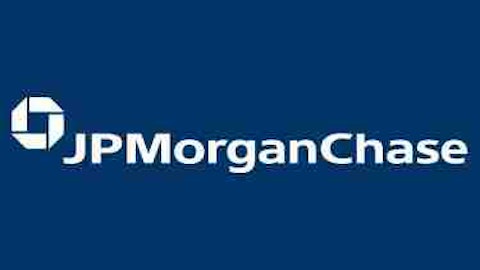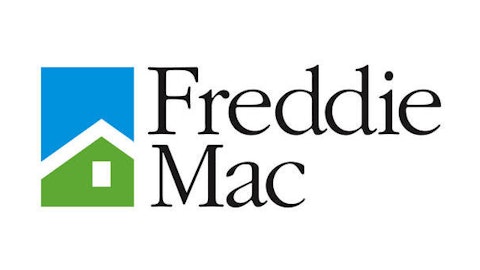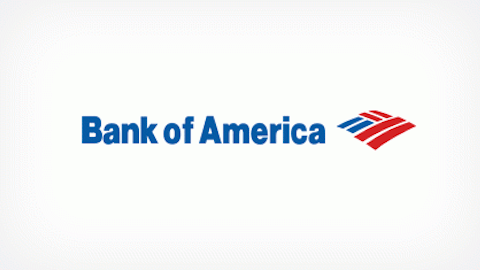Over the past several months, attention on Wall Street has been predominantly focused on the banking sector. Despite notable improvements in key economic benchmarks, investors are still taking a wait-and-see stance on banks. This comes amid uncertainty relating to the Fed’s infamous bond purchase cutback announcement as well as alternate reports detailing the seemingly huge risks in the banking sector.
Regardless of these said risks, future prospects suggest that now is the best time to invest in the banking sector. If anything, the current perceived risks are simply ebbs and flows typical to the banking industry. Long-term prospects suggest that banking stocks will track upward going forward.
Focus on performance, not reputation
The American Banker survey on American banks’ reputation is out. As expected, Bank of America Corp (NYSE:BAC) was at the bottom of the list. Not long ago, it reached the public that the bank had been pulled into a legal battle with disgruntled borrowers who argued that their loan modification requests under the Federal Home Affordable Program had, with no justifiable reason, been turned down on recurrent occasions.
Coming in at 30 out of 30, Bank of America Corp (NYSE:BAC) received a lot of nasty commentary from the public. Interestingly, Bank of America Corp (NYSE:BAC)’s case is not entirely isolated. On the contrary, all the big four settled at the bottom of the list. JPMorgan Chase & Co. (NYSE:JPM) came in at number 23, Citigroup Inc (NYSE:C) at number and Wells Fargo & Co (NYSE:WFC) at number 29.
What investors should understand is that big banks care very little for reputation. It is next-to-impossible to maintain a good reputation in the mainstream banking sector. From raging victims of foreclosure to budding entrepreneurs denied access to credit, there are many reasons (not including high profile scandals such as LIBOR rate modification and JPMorgan Chase & Co. (NYSE:JPM)’s London Whale Debacle) why consumers should hate banks. It is therefore important for investors to focus on performance and not reputation.
Going by performance, the guidance on the impending earnings, despite some slowdowns, is at large positive for the whole industry.
Recovering economy will correct rising interest rates
The biggest setback in banks exposed to the mortgage market now is rising interest rates. In the week ended June 21, the Mortgage Bankers Association intimated that mortgage rates hit highs of 4.6%, a rate not witnessed in nearly a year. Higher interest rates mean thinner margins for banks.
However, will this scenario hold?
Based on new data on the housing sector as well as the economy at large, it is very unlikely that the high interest rates will hold. Although April housing data does not reflect the upswing in interest rates, which only started rising recently, it shows that the key support points in the housing sector are tracking positively, most notably existing home prices which increased close to 12% year on year in April. Recent economic data also suggests that the U.S is on the path to full recovery. Consumer confidence hit five year highs to come in at 81.4 in May, up from the previously revised 74.5. What was most notable, however, was the increased demand for durable goods, suggesting that consumers were confident of maintaining their jobs and/or increased incomes. In addition, factories are expected to step up on production and increase investments. When and if this happens, uncertainties will fizzle out and interest rates will correct themselves. Alternatively, there will be more money in the economy to accommodate signing off on loans with higher-than-usual interest rates. Big lenders such as JPMorgan Chase & Co. (NYSE:JPM) and Wells Fargo & Co (NYSE:WFC) are likely to benefit from this.
Wells Fargo & Co (NYSE:WFC), which has for a long time been in the crosshairs of billionaire Warren Buffett, is by large a domestic bank. CEO John Stumpf reiterated this in an early June interview with the Financial Times. The bank only gleans 3% of its revenue from overseas operations. As such, the recovering U.S economy will be a big boost for it.
In light of an impending rally in the banking sector, all the big four are preparing–in whatever way possible–to maximize on the gains. JPMorgan Chase & Co. (NYSE:JPM) for instance is cementing its place among liberal-minded Americans (who happen to be the majority). The bank has publicly come out to praise the U.S Supreme Court’s decision to overturn the ruling that denies benefits to same-sex marriages. “The rights of all people are important and must be protected” said bank CEO Jamie Dimon in a statement. Citigroup Inc (NYSE:C), which gleaned 51% of its 2013 Q1 revenue from overseas operations, is also expanding its global footprint. It plans to open offices in Iraq. The bank is likely to leverage its strong international position to push operations in the domestic market going forward.
Conclusion
The fact that all the big four are trading scarily close to their 52-week highs is not a red flag. Going by the improvement in the economy, there is a high possibility that banking stocks will tread into a new share price territory. It would be wise to get into this ship now. Current 52-week highs could easily transform into 52-week lows going forward.
The article Why You Should Buy Into the Banking Sector Now originally appeared on Fool.com and is written by Lennox Yieke.
Lennox Yieke has no position in any stocks mentioned. The Motley Fool recommends Bank of America and Wells Fargo. The Motley Fool owns shares of Bank of America, Citigroup Inc (NYSE:C) , JPMorgan Chase & Co (NYSE:JPM)., and Wells Fargo. Lennox is a member of The Motley Fool Blog Network — entries represent the personal opinion of the blogger and are not formally edited.
Copyright © 1995 – 2013 The Motley Fool, LLC. All rights reserved. The Motley Fool has a disclosure policy.
